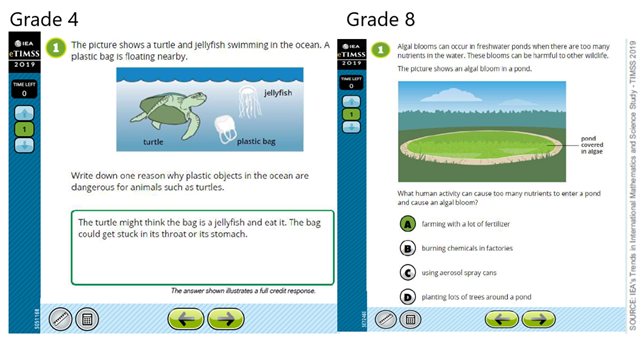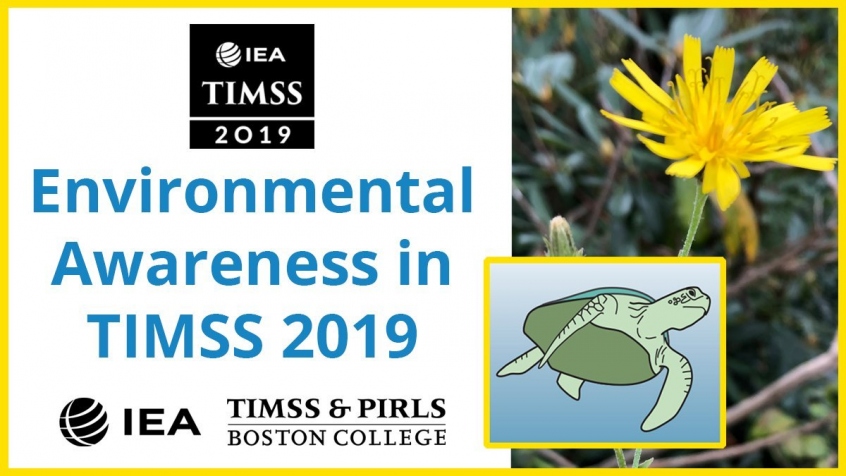As the climate crisis is communicated with increasing urgency, environmental education has never been more important, but do students believe they have learned to protect the environment, and how well do they answer environment-based assessment items?
To learn what the TIMSS 2019 science assessment tells us about students’ understanding of the environment, the TIMSS & PIRLS International Study Center constructed environmental awareness scales based on a wide range of topics as specified in the TIMSS science assessment frameworks. These include conservation, ecosystems, pollution, climate change, and cycles in nature. These scales have now been added to the TIMSS 2019 International Database and IEA IDB Analyzer, and are available here.
Looking at student environmental knowledge, two assessment items from TIMSS 2019 have been selected for analysis here, in the theme of protecting the environment. The first item, pictured below, is a fourth-grade assessment item that looks at the problem of plastic ending up in the ocean. Internationally, on average, 65% of fourth-grade students, across the 58 countries who participated, answered the item correctly. However, this ranged from as low as 20% of students in one country, to as high as 82% of students in another.

The second item is an eighth-grade assessment, pictured above, testing knowledge on freshwater pollution. Across the 39 countries who participated at this level, just half of the students (52%) answered the question correctly, with a range of 42% between the bottom and top-scoring countries. Results for these two assessment items can be explored by country here.
For a summary of the overall results across TIMSS 2019 countries, and some examples of TIMSS items that relate to human activities that can harm or benefit the environment, please watch the video here.
Commenting on the IDB release, IEA Executive Director, Dr Dirk Hastedt, said:
“TIMSS is a valuable tool to support with the measuring and monitoring of educational targets. With no international indicator currently existing in the context of environmental science and green education, the environment scale is an additional tool that TIMSS can offer. It is important for curricula around the world to include a solid foundation for environmental problem-solving, to reflect the challenges modern society faces, nurturing future citizens who can tackle these issues.”
Image Credit: TIMSS & PIRLS International Study Center - Boston College

